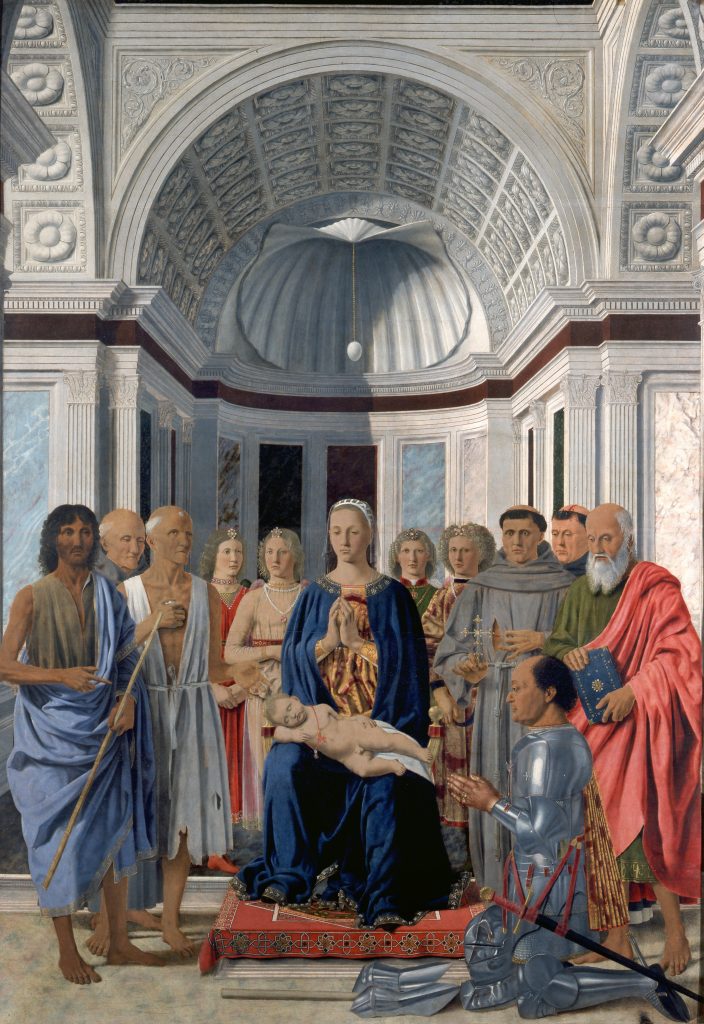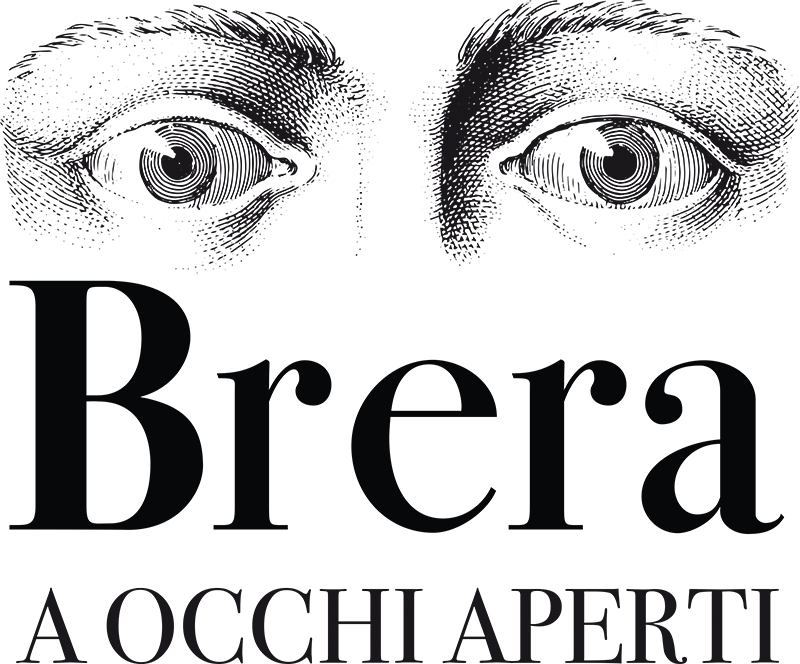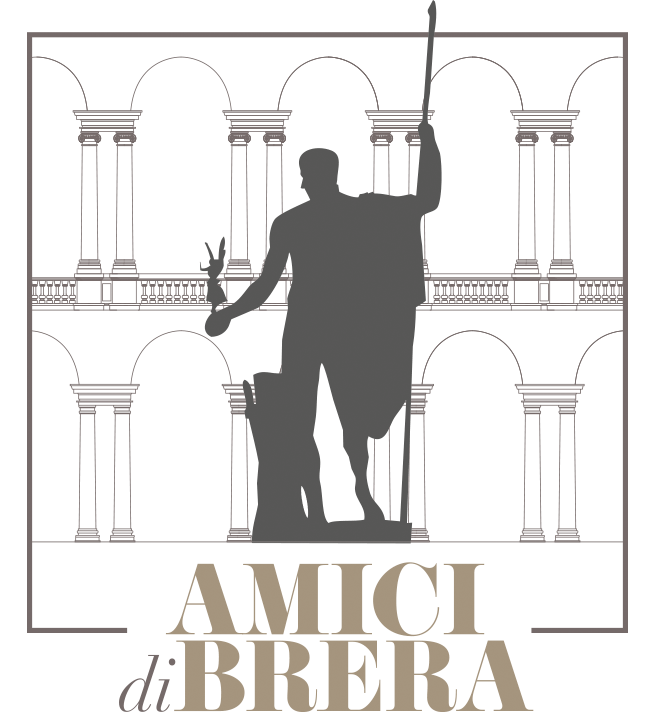PIERO DELLA FRANCESCA
(Borgo Sansepolcro, giugno 1412 circa – Borgo Sansepolcro, 12 ottobre 1492)
Madonna and Child with Saints, Angels and Federico da Montefeltro (San Bernardino Altarpiece)
1472-74
Tempera on panel
251×172 cm

PAINTING
During the Napoleonic suppression of the Italian religious orders, this altarpiece was moved to the Pinacoteca di Brera from the Church of San Bernardino in Urbino, which had been erected by Federico da Montefeltro as his mausoleum. The panel is a perfect example of Piero della Francesca’s study of perspective, though it has been downsized: originally the architectural structure was more grandiose, and yet it still represents the highest point of the studies on space and perspective on the part of Central Italian artists in the 15th century.
In it we find an intertwining of the public, and thus political, purpose, of religious devotion, as well as references to the private history of the man who had commissioned the work. The Duke of Urbino had possibly considered it a tribute to the birth of his heir, Guidubaldo, soon followed by the death of his wife, Battista Sforza. The coral necklace – evocative of the colour of blood, but also a good luck charm – around the sleeping Child’s neck anticipates the Passion and death of Christ, bringing us back to the funerary aspect of the work. The protection awarded by the Virgin to the Duke’s dynasty is condensed in the symbol of the ostrich egg hanging from the shell, a reference to Mary’s miraculous pregnancy as well as to the Montefeltro family’s heraldic device.
The light is abstract and motionless; the refined geometries it creates exalt the purity of the architectural structures, enveloping the figures in a silent, entirely intellectual sacra conversazione (sacred conversation).
A curious fact: the duke is wearing his warlord’s armour, having placed his helmet and staff at the group’s feet, and his hands are joined in prayer. These hands were touched up by Pedro Berruguete in a very different style from Piero della Francesca’s painting, which is full of light.
BIOGRAPHY
Unfortunately, we know very little of Piero della Francesca’s biography, owing to an overall lack of reliable historical documentation.
It is quite likely that he studied in Florence, where he is mentioned for the first time in 1439 as an assistant to Domenico Veneziano. He then resided at a number of Italian courts, among which Ferrara, where he became acquainted with Flemish painting.
Among his greatest masterpieces: his frescos for the Tempio Malatestiano in Rimini, the cycle of the True Cross for the Basilica of San Francesco in Arezzo, the painting of the Flagellation of Christ in Urbino, still mysterious in its interpretation, and the diptych with the portraits of the Duke and Duchess of Montefeltro, Federico and Battista Sforza, at the Uffizi.
His art is a balance of pure geometry and the rendition of light, his figures always enveloped in an unearthly setting, alien to fleeting human passions, and evokes complex theological, philosophical, humanistic, and general issues.
He was also a mathematician and a theorist, and the author of several treatises, among which the De prospectiva pingendi.

